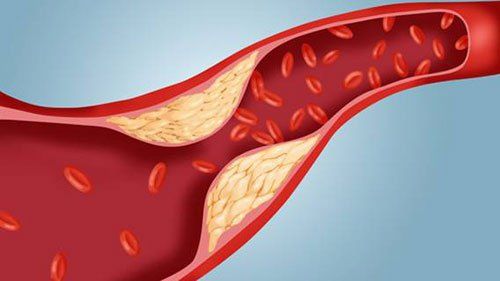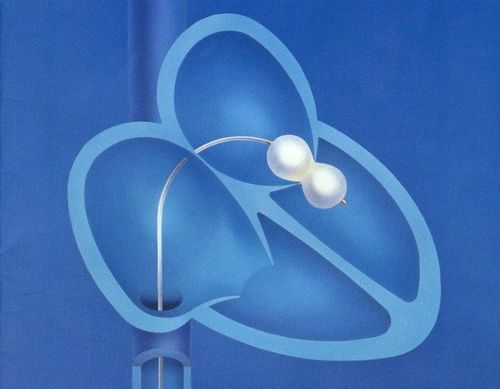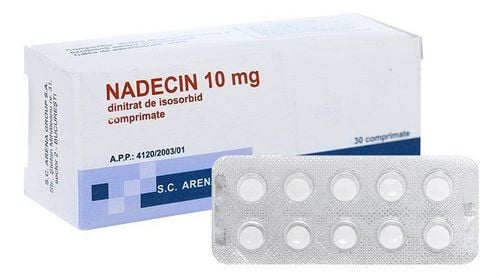This is an automatically translated article.
The article is written by Assoc., PhD, BSCK II Chu Hoang Van, Department of Medical Examination - Vinmec Times City International General Hospital
Asymptomatic aortic stenosis is a dangerous disease with no obvious symptoms that can only be discovered by chance in clinical and echocardiography during physical examination. The disease can only be effectively treated when replacing the aortic valve, drug treatment only works to reduce symptoms, making the patient more comfortable.
1. Aortic stenosis and aortic stenosis are asymptomatic
1.1 What is aortic stenosis? Aortic stenosis is a condition in which left ventricular ejection is limited due to a decrease in the area of the aortic orifice (to varying degrees)
1.2 What is asymptomatic aortic stenosis? Is a condition of aortic valve stenosis in the early stage - early, the patient has no related symptoms, only incidentally discovered clinically (auscultation) and echocardiography has signs of stenosis. Mild aortic valve (> 1.5 cm) and normal left ventricular ejection fraction (EF)
2. Causes of aortic valve stenosis

Xơ vữa động mạch có thể gây ra bệnh hẹp van động mạch chủ
Congenital: due to abnormal structure of the valve leaflet since birth (only 2 leaflets, over time causing valve stenosis); Due to rheumatic heart disease (rheumatism): causes thickening, scarring, calcification of the valve (usually a sequelae of valve damage from young people); Due to atherosclerosis, valve calcification (usually in the elderly, and with other associated diseases).
3. Diagnosis of aortic valve stenosis
Clinical symptoms: typical, intermittent left chest tightness, increasing with exertion, mild dyspnea, often weak pulse (may be fast or slow) blood pressure is often low (<90 mmHg) or stuck (90/70 mmHg) ) Or (at an early stage - early) no symptoms mentioned above. Detected only when auscultating the heart (systolic murmur in the left and right II-III intercostals, spreading above the neck or spreading along the sternum / depending on the degree of stenosis can be loud, rough, or small. ..) Echocardiography DOPPLER Cardiac : to confirm the diagnosis , determine the degree of valve stenosis and the function of the heart to what extent Electrocardiogram : in the early stages may be normal. In the symptomatic period and with changes on echocardiography, the electrocardiogram shows signs of left ventricular systolic overload and possibly arrhythmias related to X-ray of the heart and lungs: may be normal at this stage. At first, after many years, the picture of the aortic heart (left ventricular and aortic arch dilatation, valve calcification) Blood test: may show signs of dyslipidemia or associated diabetes, coordination fit
4. Treatment of aortic stenosis

Thay van động mạch chủ để điều trị bệnh hẹp van động mạch chủ
4.1 Medical treatment with drugs is not able to completely cure valve stenosis, but helps relieve symptoms or treat the cause (treatment of rheumatic heart disease, treatment of atherosclerosis...). Drug therapy has a therapeutic effect in the early stages without symptoms, mild valve stenosis, normal left ventricular ejection function, making patients more comfortable. Or at a late stage – when the indication for intervention or surgery is no longer available (or the patient refuses to intervene).
4.2 Surgical treatment Aortic valve replacement - is the most basic treatment of aortic stenosis. Especially in the symptomatic stage (heart failure), severe valve stenosis (<1 cm2) and a marked decrease in left ventricular systolic function (EF) and the patient's condition permitting valve replacement.
Currently (in the country and in the world) a minimally invasive method, suitable for the patient's condition, is the percutaneous aortic valve replacement method, transcatheter valve replacement (TAVR), the transcatheter valve replacement method. can be artificial or biological valves. The method of valve replacement has very well resolved the hemodynamic status of the previous stenosis and the patient's prognosis has been greatly improved.
5. Consulting

Khám sức khỏe định kỳ hàng năm giúp phòng ngừa và phát hiện sớm bệnh
The early detection of patients with aortic stenosis right from the time when there are no clinical symptoms is very important, related to disease monitoring, disease prognosis and decision on long-term treatment direction. worsening (requiring valve replacement).
To get that, it is recommended to have annual health check-ups, cardiovascular counseling and exclude co-morbidities (diabetes, lipid metabolism disorders, uric acid, kidney failure and rheumatic heart disease if any ..)
Need a relaxing mode both psychologically and physically, suitable sports (walking, running, swimming, cycling, table tennis depending on your preferences)
Diet to reduce salt, animal fat, maximum red meat. Abstain from strong alcohol, quit smoking (if any), eat more fish, vegetables and fruits, drink enough water (1500 ml/day), maybe a little beer or red wine (200-300 ml/day) depending on your preferences. prefer.
Combination of natural anti-oxidants (Vitamin E, Armolipid plus, Gluthathione .....)
But in the stage of heart failure, heart valve replacement should not be strenuous, nor do too much exercise. Just relax, walk and take heart failure medication, anticoagulant as prescribed.
Currently, Vinmec International General Hospital has general health checkup packages suitable for each age, gender and individual needs of customers with a reasonable price policy, including:
Health checkup package Vip general health Standard general health checkup package Patient's examination results will be returned to your home. After receiving the results of the general health examination, if you detect diseases that require intensive examination and treatment, you can use services from other specialties right at the Hospital with quality treatment and services. outstanding customer service.
Please dial HOTLINE for more information or register for an appointment HERE. Download MyVinmec app to make appointments faster and to manage your bookings easily.













